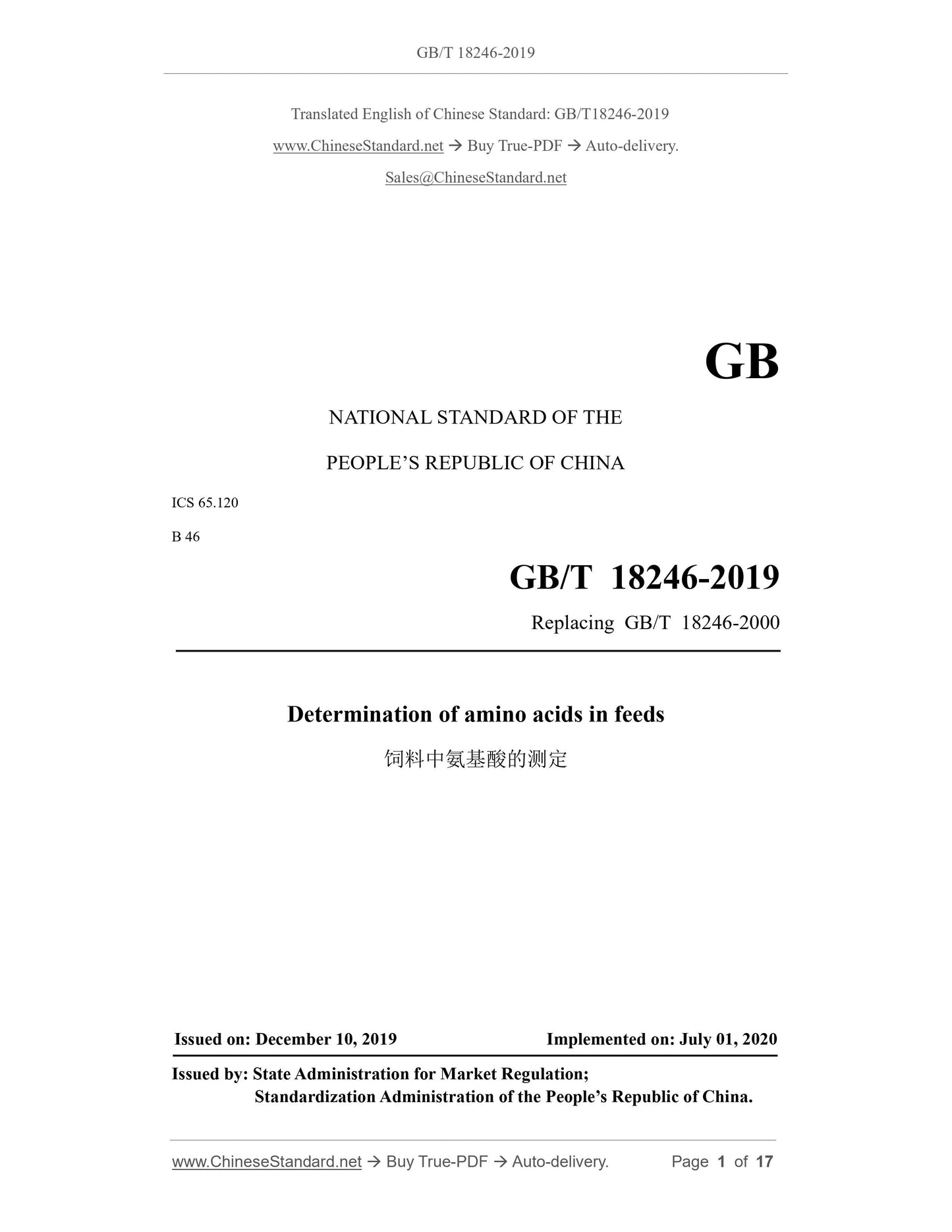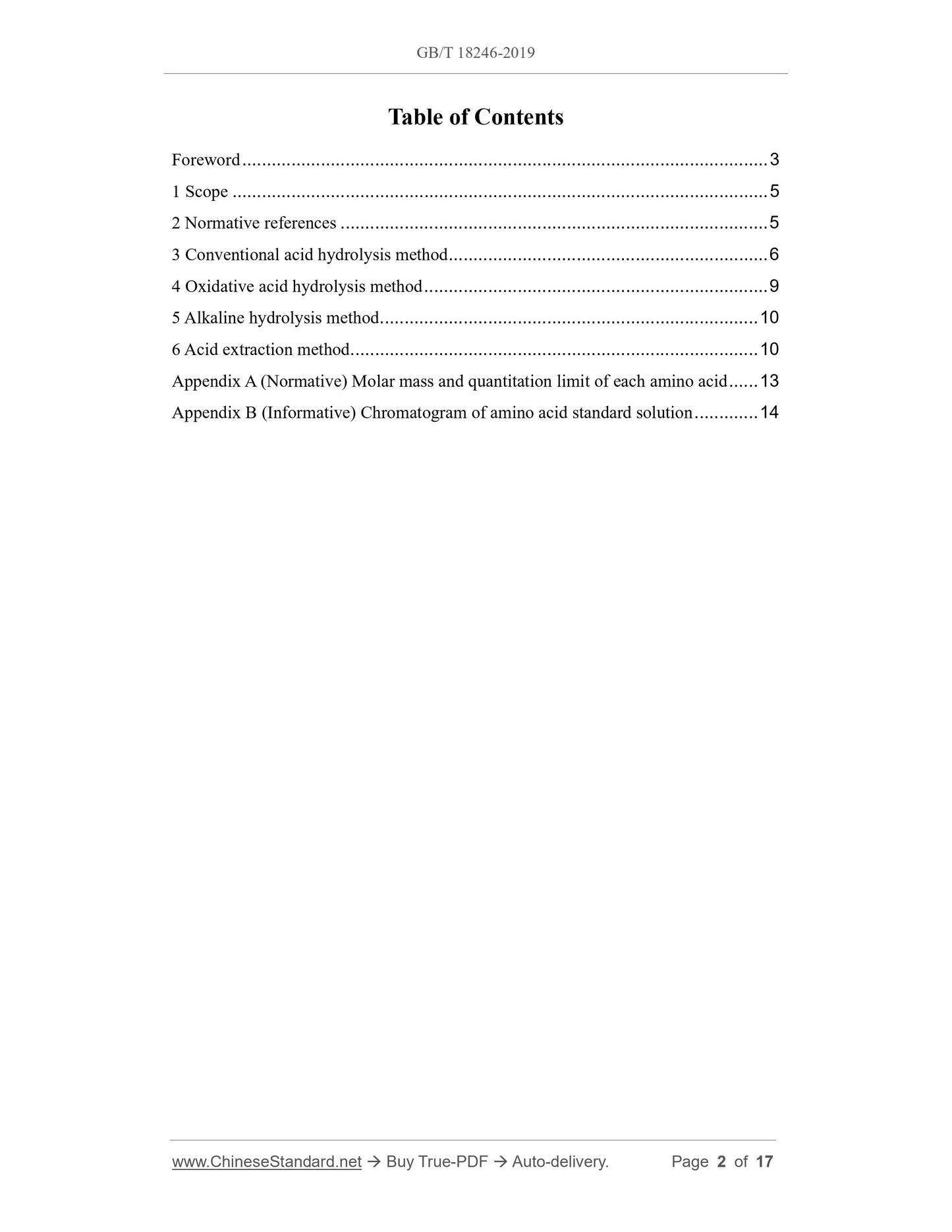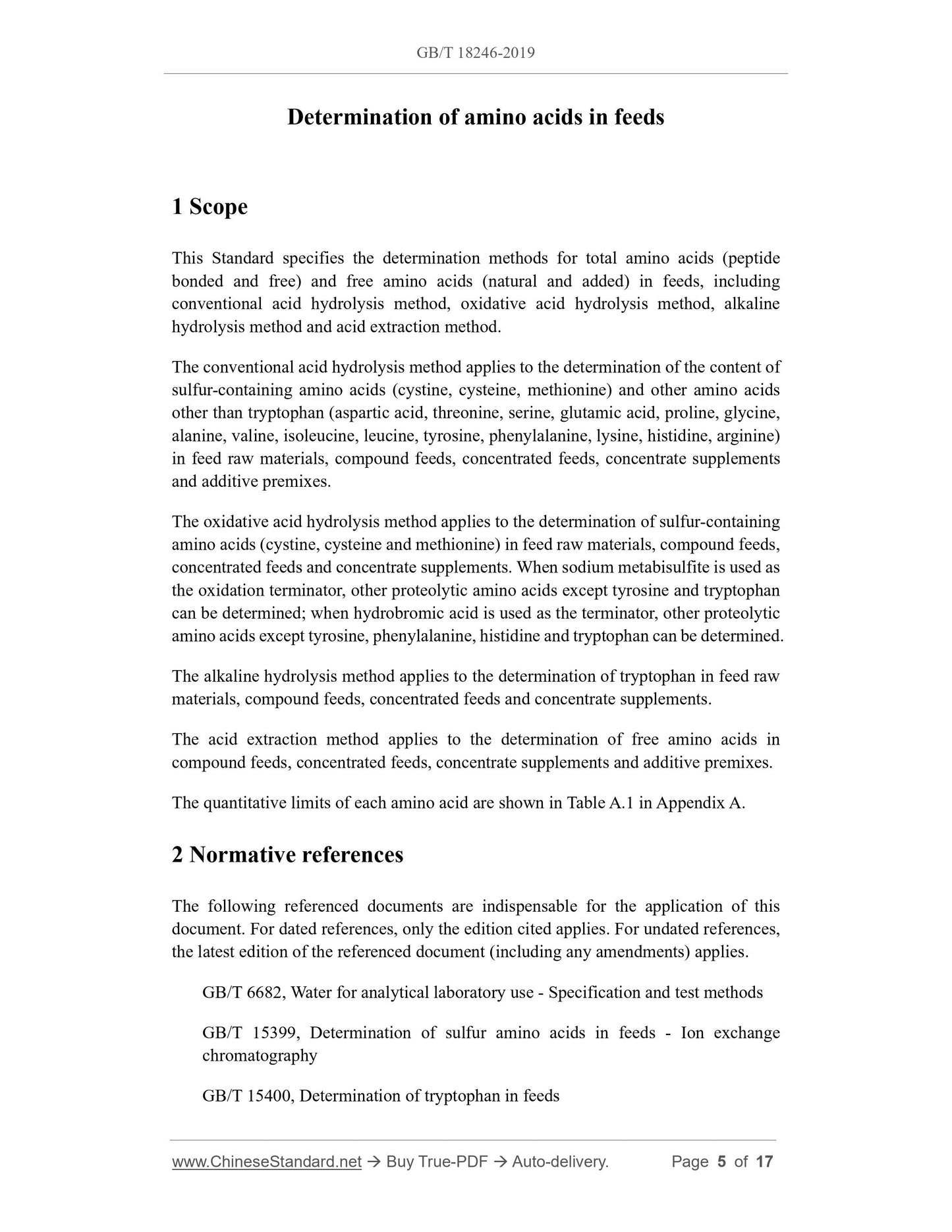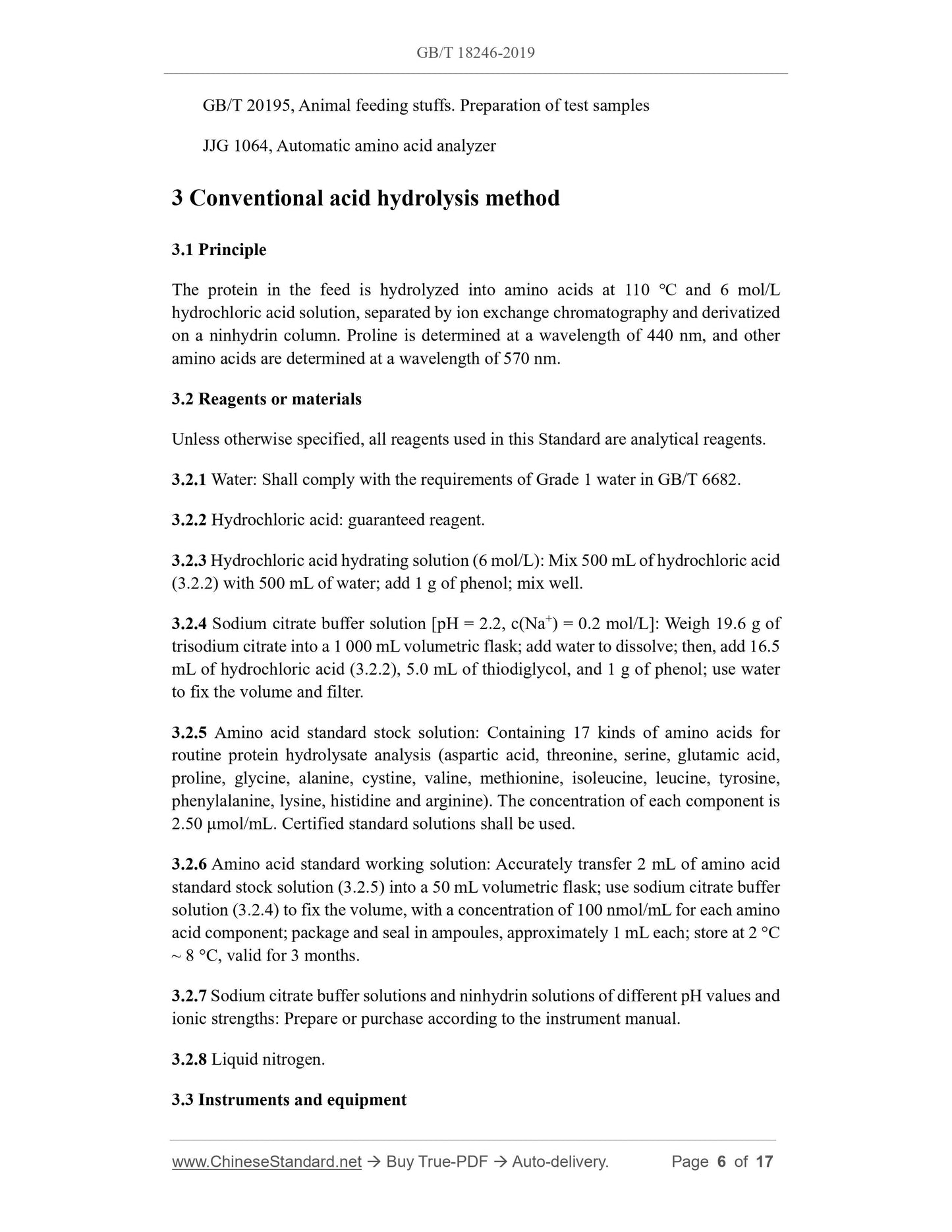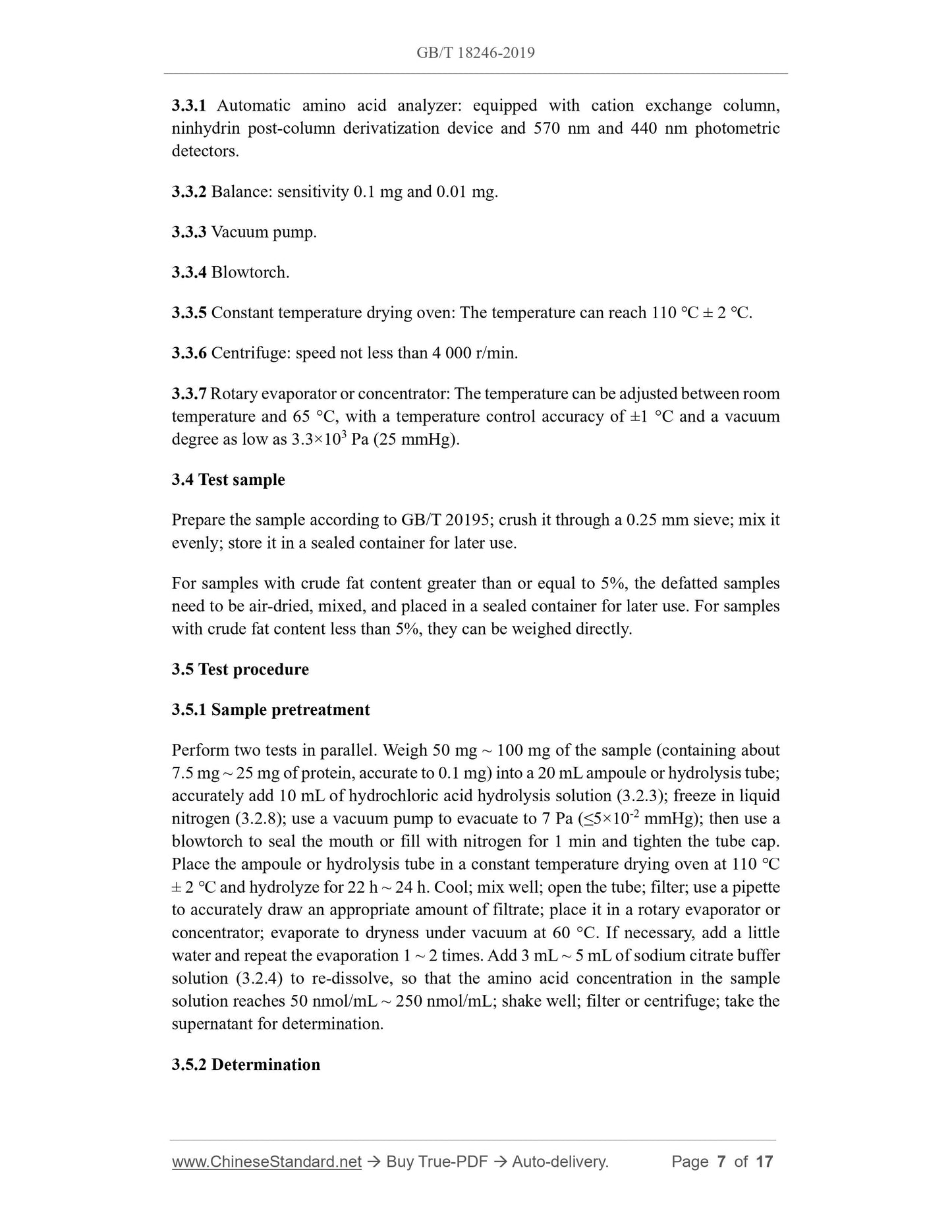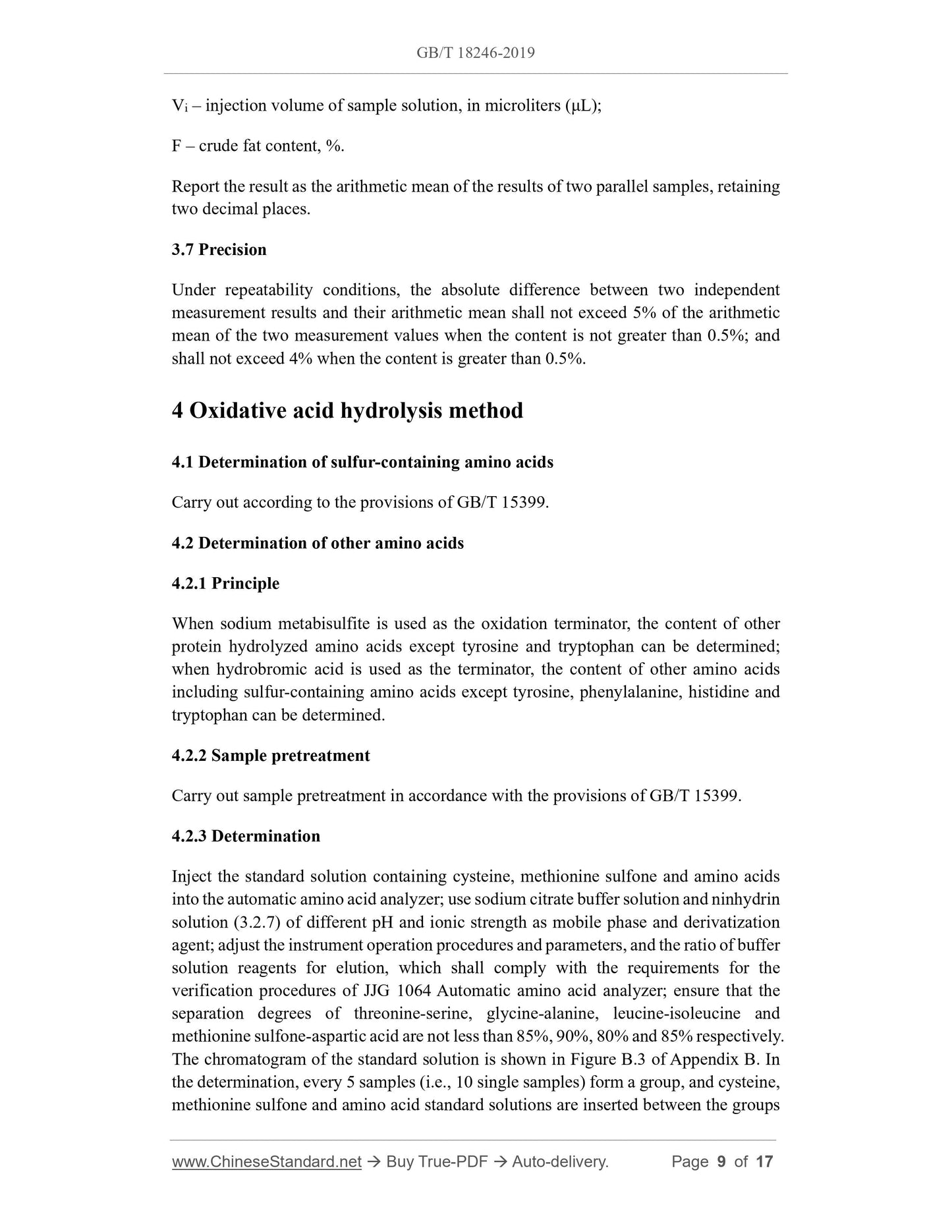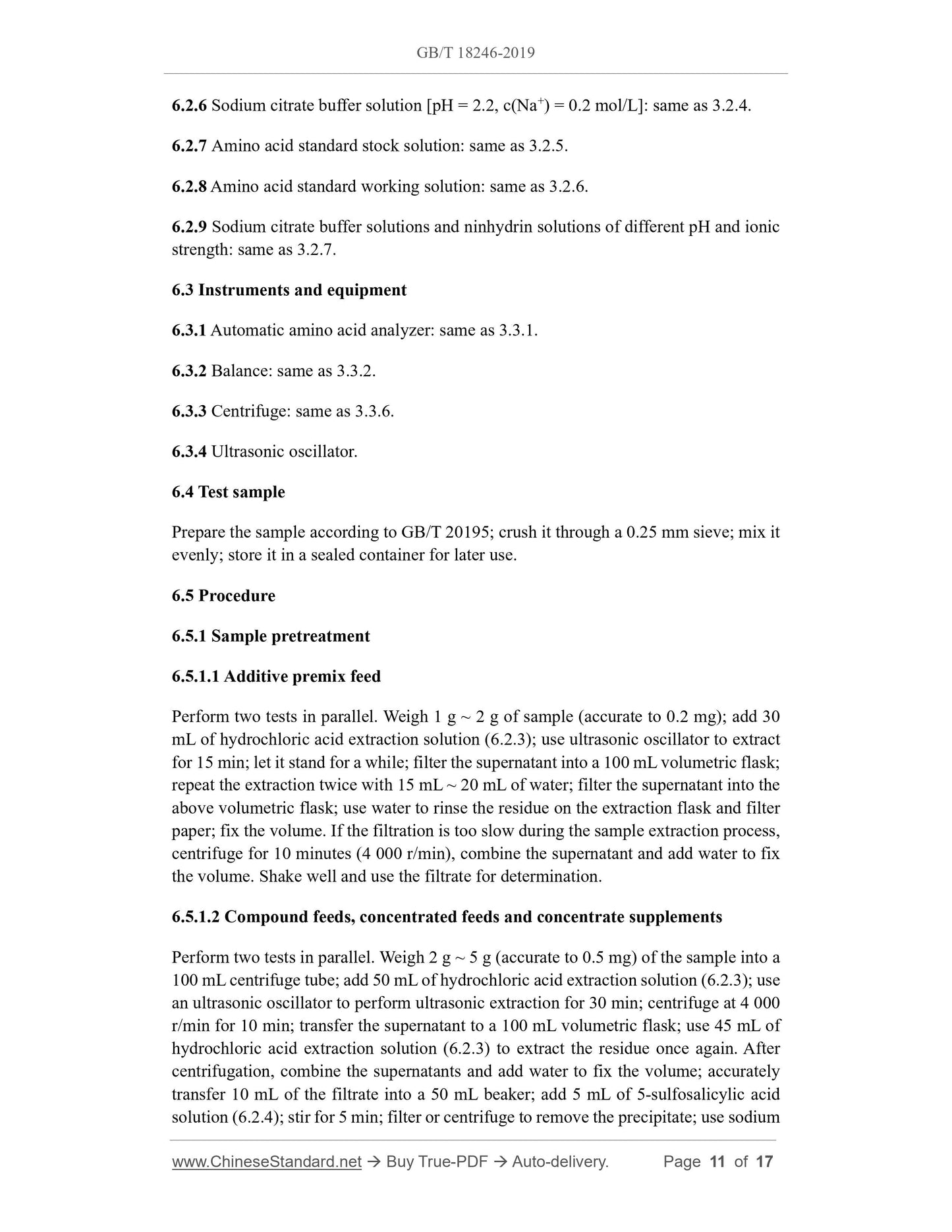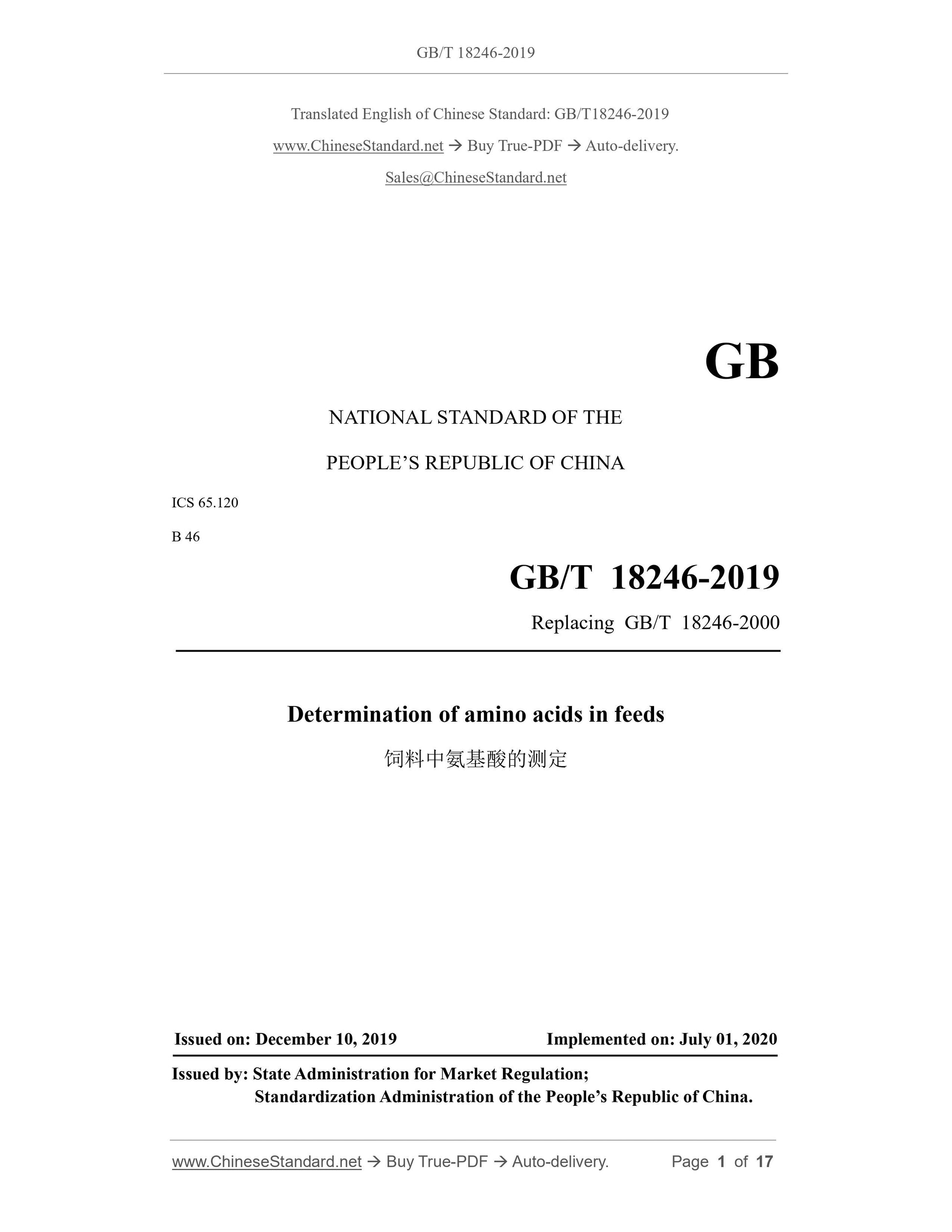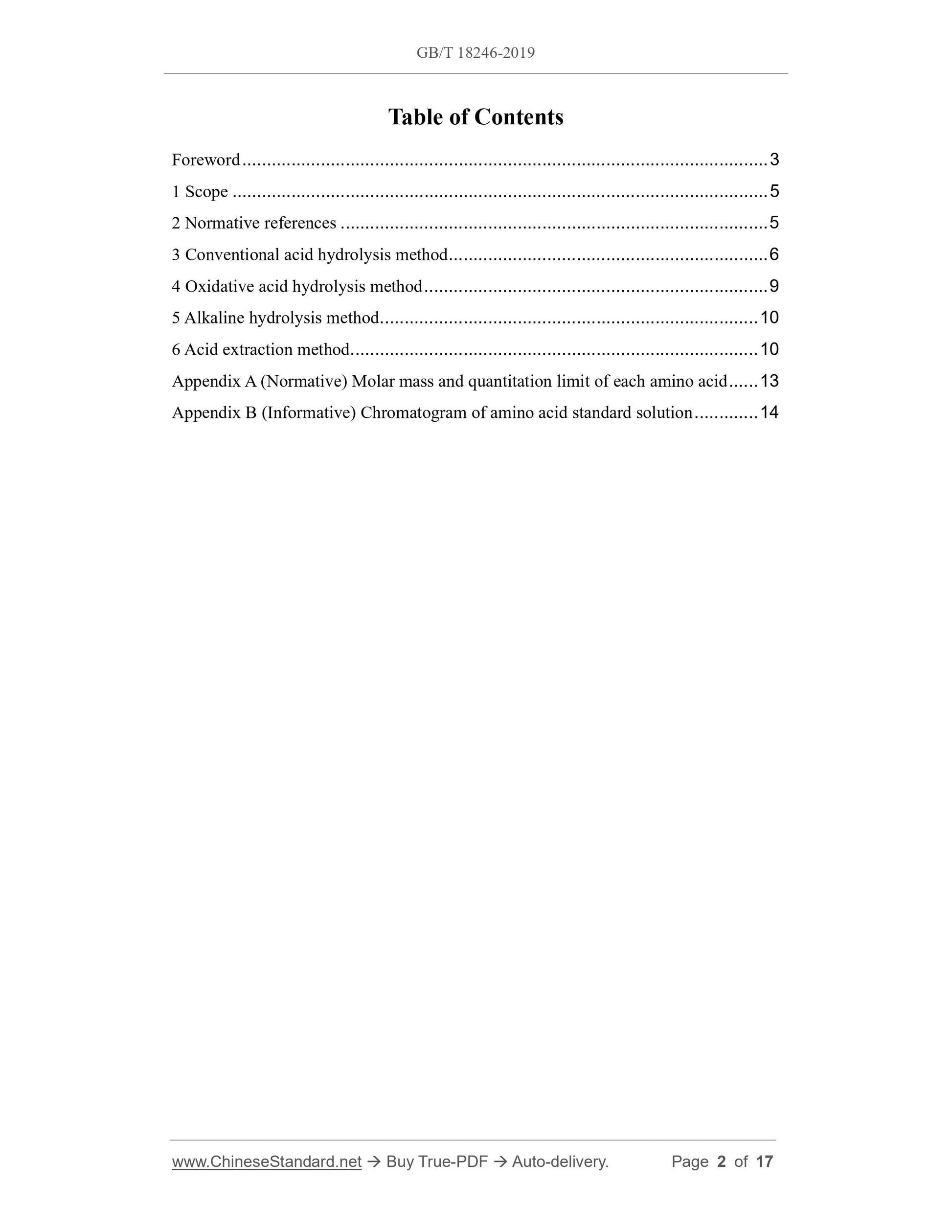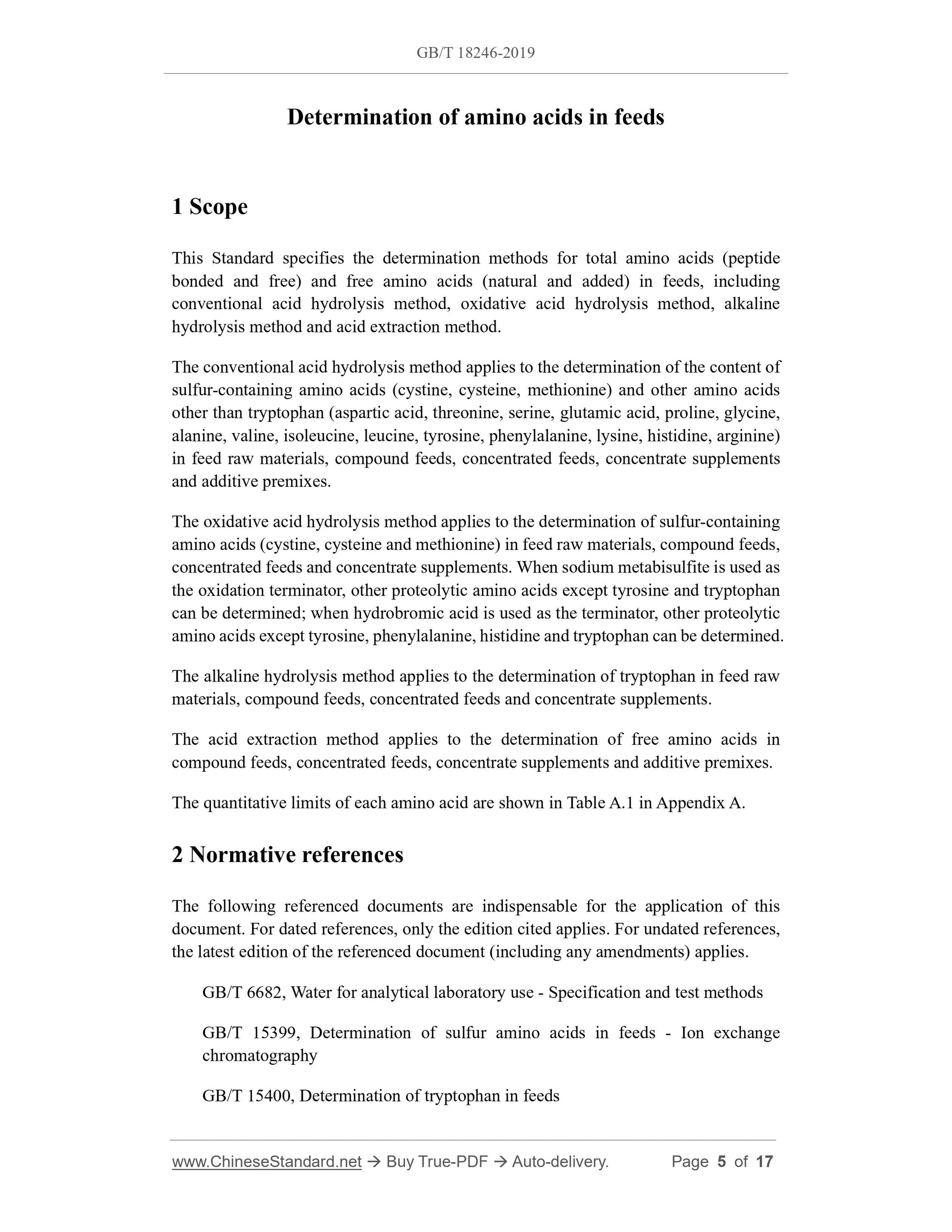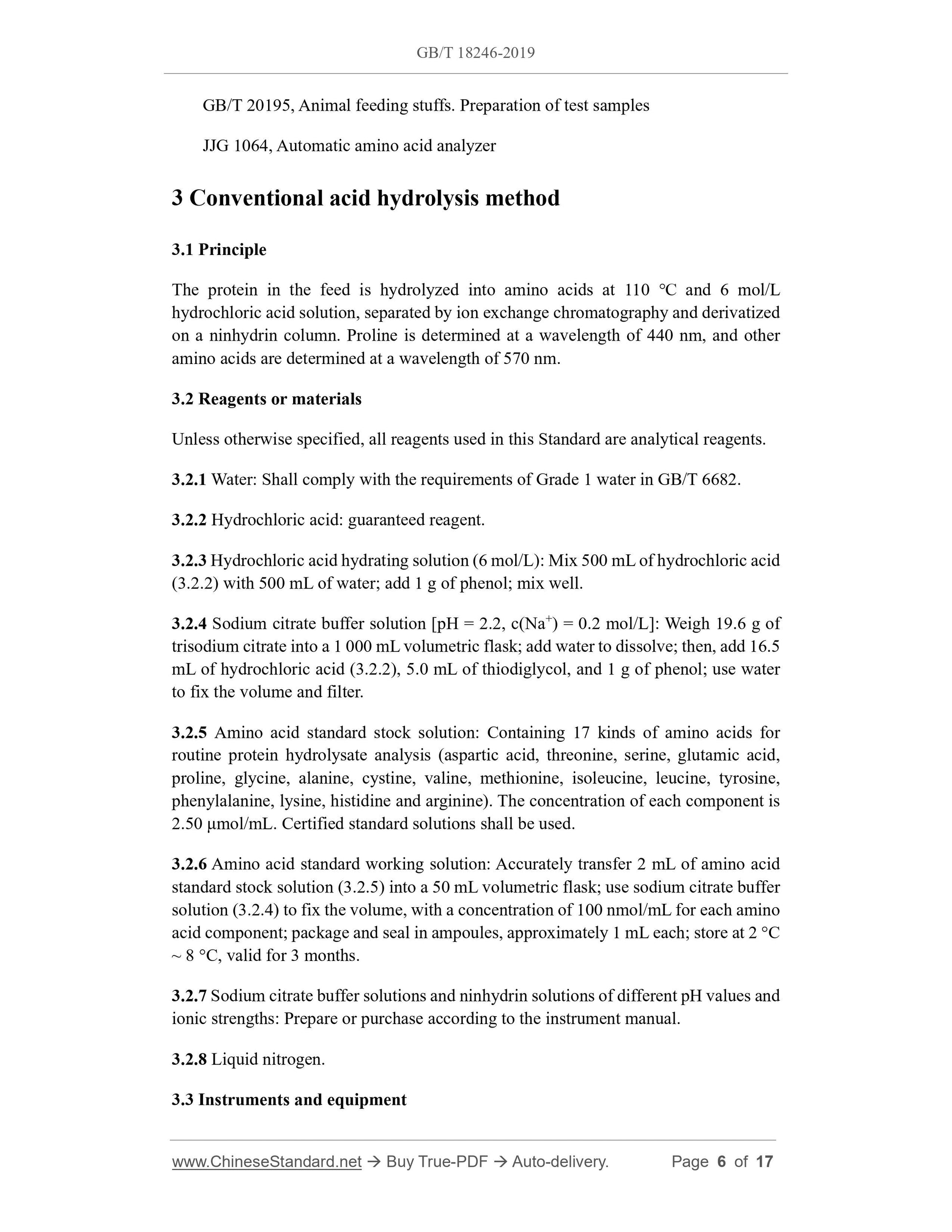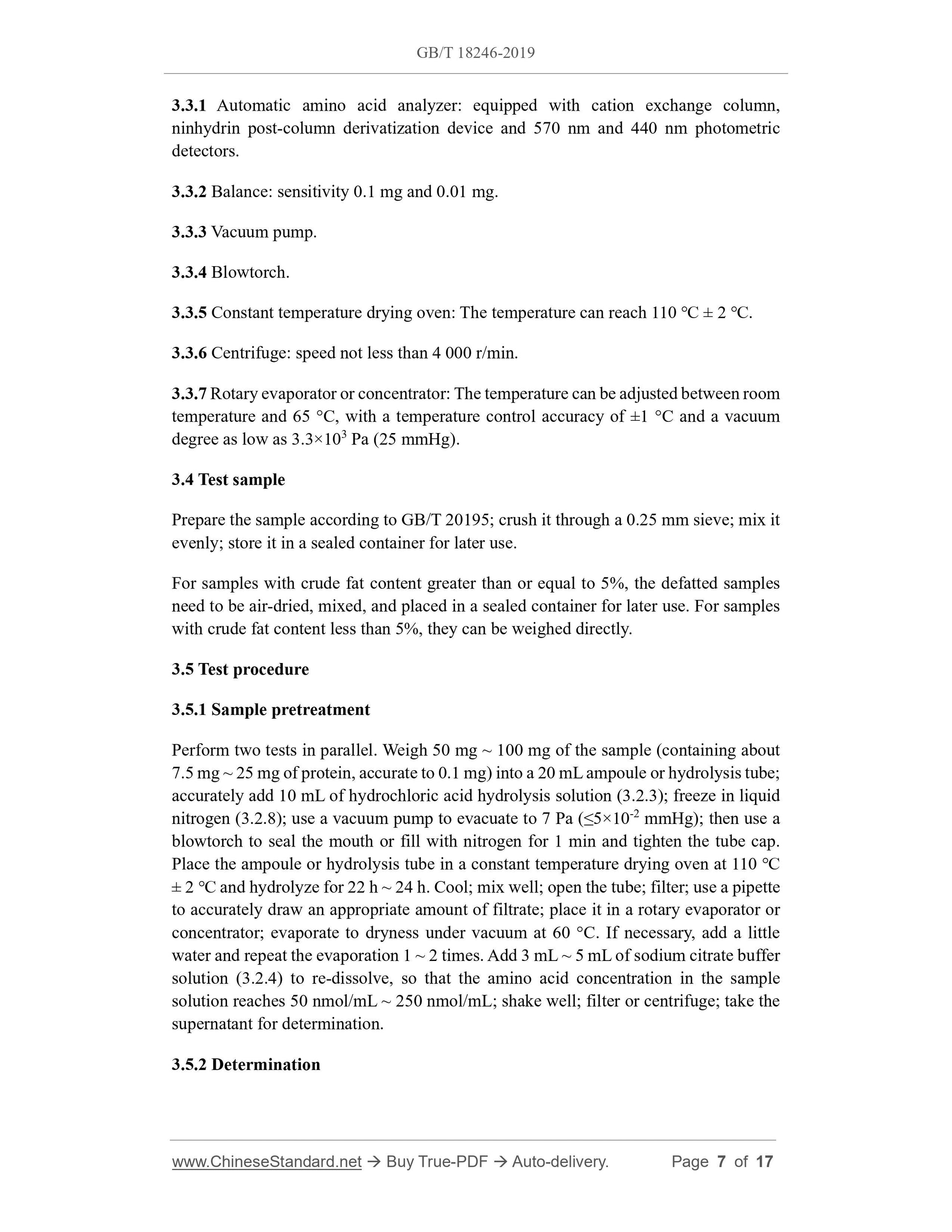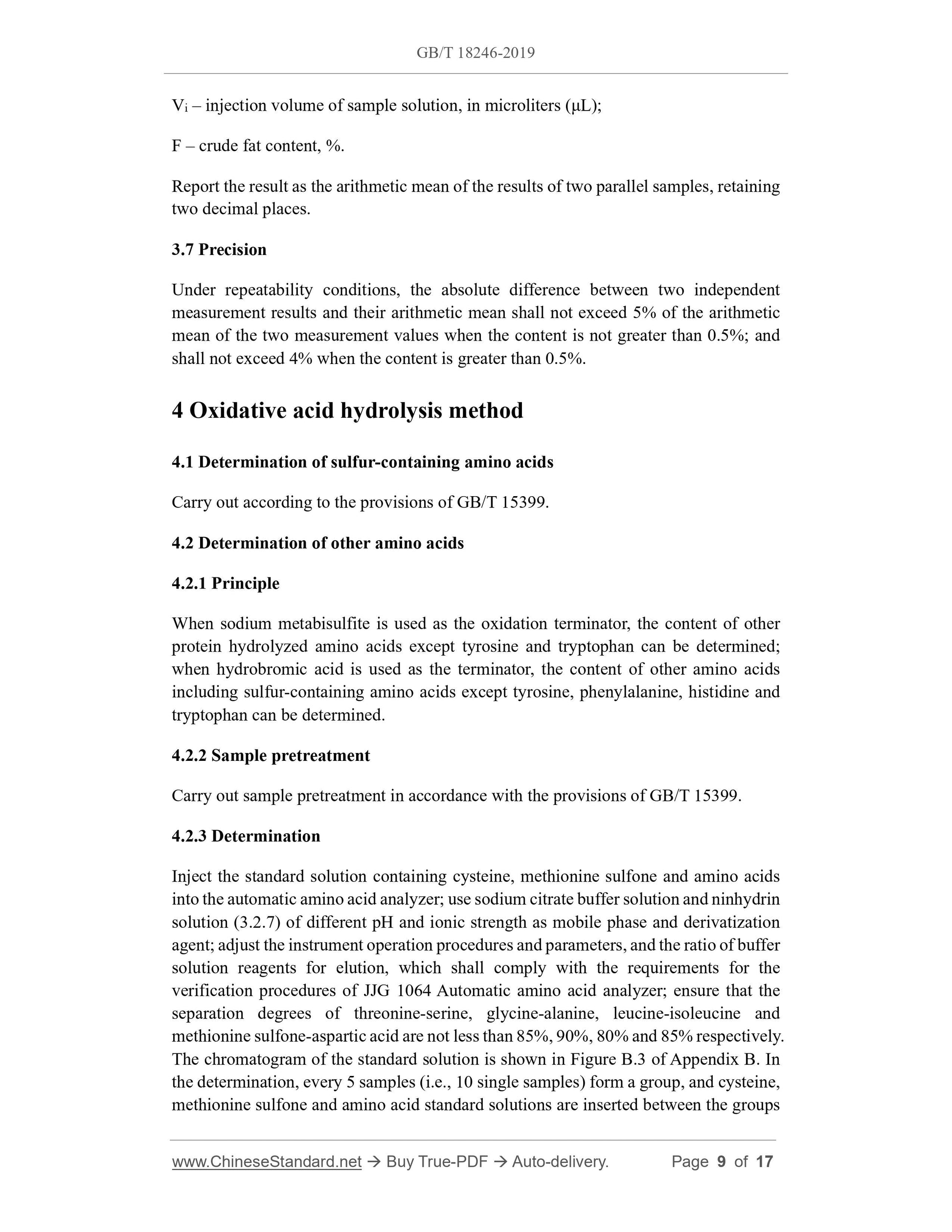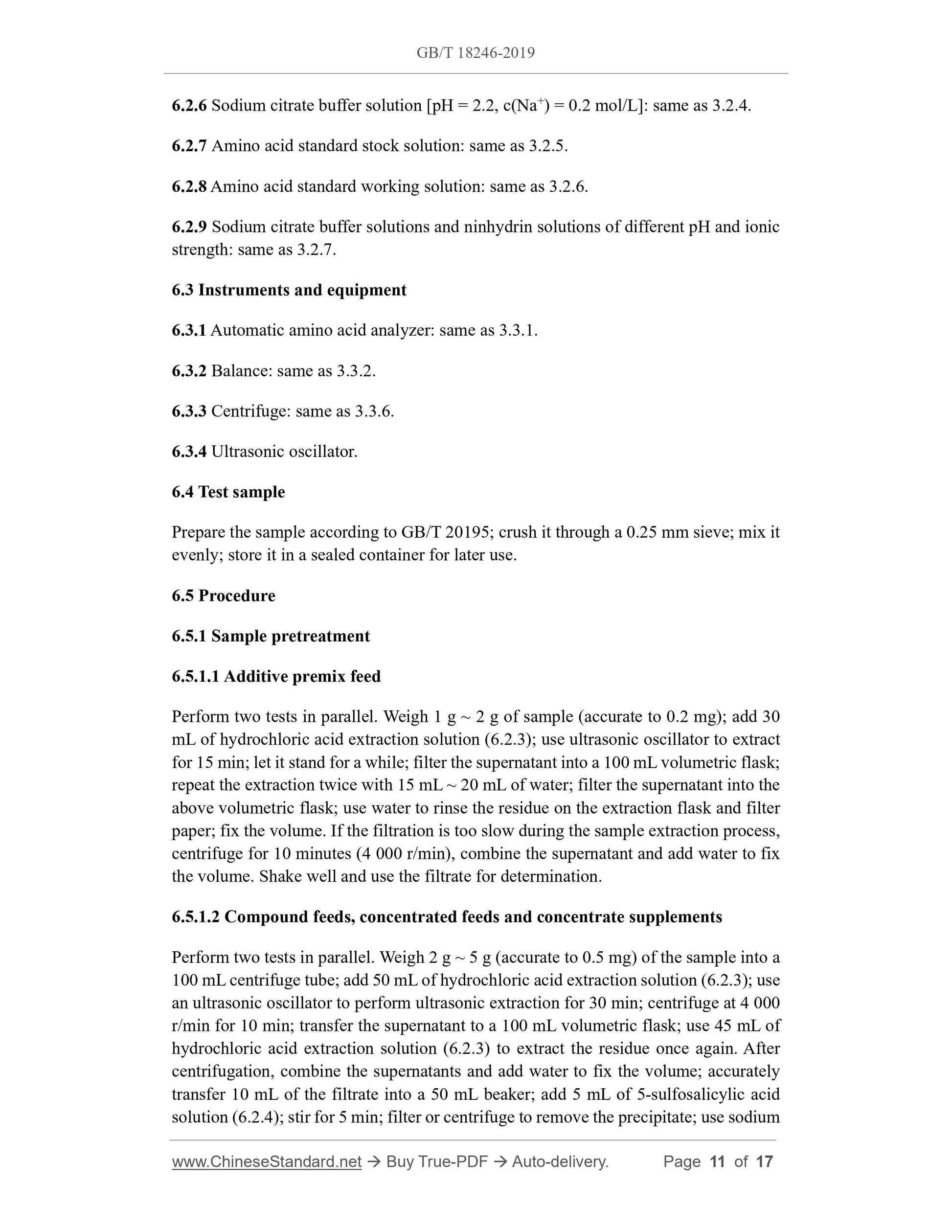1
/
of
7
www.ChineseStandard.us -- Field Test Asia Pte. Ltd.
GB/T 18246-2019 English PDF (GB/T18246-2019)
GB/T 18246-2019 English PDF (GB/T18246-2019)
Regular price
$235.00
Regular price
Sale price
$235.00
Unit price
/
per
Shipping calculated at checkout.
Couldn't load pickup availability
GB/T 18246-2019: Determination of amino acids in feeds
Delivery: 9 seconds. Download (and Email) true-PDF + Invoice.Get Quotation: Click GB/T 18246-2019 (Self-service in 1-minute)
Newer / historical versions: GB/T 18246-2019
Preview True-PDF
Scope
This Standard specifies the determination methods for total amino acids (peptidebonded and free) and free amino acids (natural and added) in feeds, including
conventional acid hydrolysis method, oxidative acid hydrolysis method, alkaline
hydrolysis method and acid extraction method.
The conventional acid hydrolysis method applies to the determination of the content of
sulfur-containing amino acids (cystine, cysteine, methionine) and other amino acids
other than tryptophan (aspartic acid, threonine, serine, glutamic acid, proline, glycine,
alanine, valine, isoleucine, leucine, tyrosine, phenylalanine, lysine, histidine, arginine)
in feed raw materials, compound feeds, concentrated feeds, concentrate supplements
and additive premixes.
The oxidative acid hydrolysis method applies to the determination of sulfur-containing
amino acids (cystine, cysteine and methionine) in feed raw materials, compound feeds,
concentrated feeds and concentrate supplements. When sodium metabisulfite is used as
the oxidation terminator, other proteolytic amino acids except tyrosine and tryptophan
can be determined; when hydrobromic acid is used as the terminator, other proteolytic
amino acids except tyrosine, phenylalanine, histidine and tryptophan can be determined.
The alkaline hydrolysis method applies to the determination of tryptophan in feed raw
materials, compound feeds, concentrated feeds and concentrate supplements.
The acid extraction method applies to the determination of free amino acids in
compound feeds, concentrated feeds, concentrate supplements and additive premixes.
The quantitative limits of each amino acid are shown in Table A.1 in Appendix A.
Basic Data
| Standard ID | GB/T 18246-2019 (GB/T18246-2019) |
| Description (Translated English) | Determination of amino acids in feeds |
| Sector / Industry | National Standard (Recommended) |
| Classification of Chinese Standard | B46 |
| Classification of International Standard | 65.120 |
| Word Count Estimation | 14,195 |
| Date of Issue | 2019-12-10 |
| Date of Implementation | 2020-07-01 |
| Older Standard (superseded by this standard) | GB/T 18246-2000 |
| Quoted Standard | GB/T 6682; GB/T 15399; GB/T 15400; GB/T 20195; JJG 1064 |
| Issuing agency(ies) | State Administration for Market Regulation, China National Standardization Administration |
| Summary | This standard specifies methods for the determination of total amino acids (peptide-bonded and free) and free amino acids (natural and added) in feed, including conventional acid hydrolysis, oxidative acid hydrolysis, alkaline hydrolysis and acid extraction. The conventional acid hydrolysis method is suitable for sulfur-containing amino acids (cystine, cysteine, methionine) and amino acids other than tryptophan (tianmen) in feed raw materials, compound feeds, concentrated feeds, concentrate supplements and additive premix feeds. Partic acid, threonine, serine, glutamic acid, proline, glycine, alanine, valine, isoleucine, leucine, tyrosine, phenylalanine, lysine, Determination of histidine, arginine) content. The oxidative acid hydrolysis method is suitable for sulfur-containing amino acids (cystine, cysteine ??and egg yolk) in feed ingredients, compound feeds, concentrated feeds and concentrate supplements. |
Share
